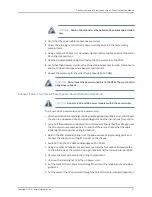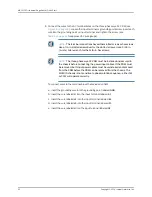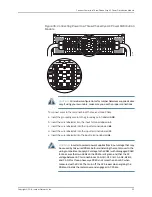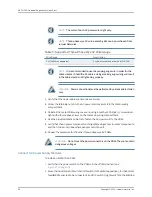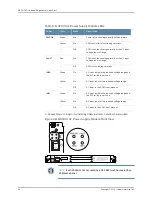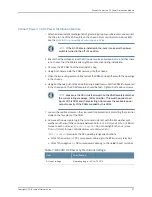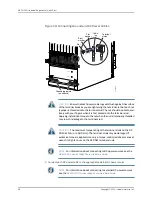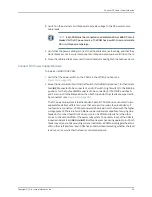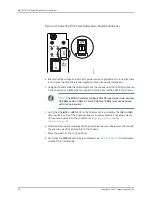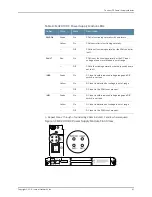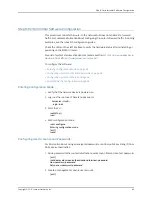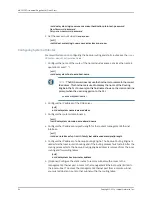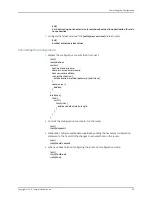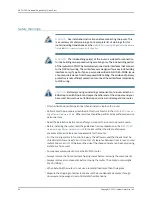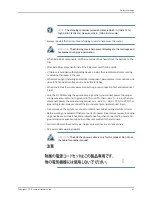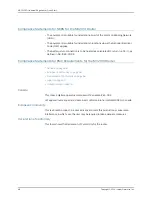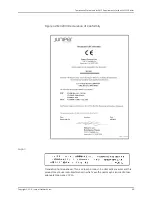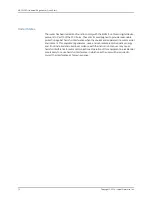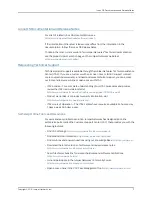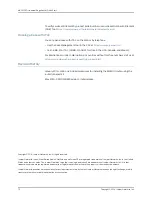
10.
Switch on the external circuit breakers to provide voltage to the DC power source
cable leads.
NOTE:
Each PDM must be connected to a dedicated
60A
, or
80A
DC circuit
breaker for the DC power source. The PDM has a switch to accommodate
DC circuit breaker amperage.
11.
Verify that the power cabling is correct, that the cables are not touching, and that they
do not block access to router components or drape where people could trip on them.
12.
Close the cable restraint cover over the terminal studs, and tighten the captive screws.
Connect DC Power Supply Modules
To install an MX2010 DC PSM:
1.
Verify that the power switch on the PSM is in the off (
O
) position (see
).
2.
Move the input mode DIP switch
0
(left switch) to the
ON
(top position), for the bottom
feed
INP0
(expected to be connected), and DIP switch
1
(right switch) to the
ON
(top
position), for the top feed
INP1
(expected to be connected). If both DIP switches
0
and
1
are turned to the
ON
position, then both top and bottom feeds are expected to
be connected, (see
The DC power subsystem is feed redundant. Each DC PSM can be connected to two
separate feeds from different sources that are used to provide feed redundancy. If
two feeds are connected, PSM input power will be drawn from the feed with the higher
voltage present. There are two PDMs per power subsystem capable of carrying nine
feeds each. Connect feeds from one source to one PDM and feeds from the other
source to the second PDM of the power subsystem. The primary input of the PSM is
a dual redundant feed,
INP0
and
INP1
. Both feeds are active during operation, but both
feeds may or may not be providing current. In addition, a PSM failure triggers the alarm
LED on the craft interface. Each PDM has an LED per feed indicating whether the feed
is active or not, or whether the feed is connected properly.
59
Copyright © 2014, Juniper Networks, Inc.
Connect DC Power Supply Modules







